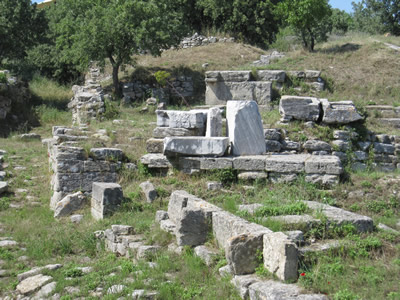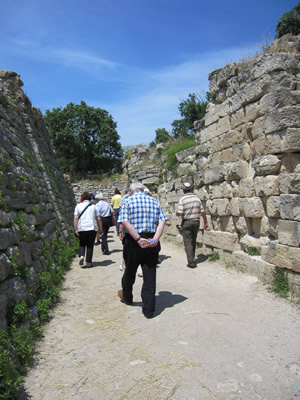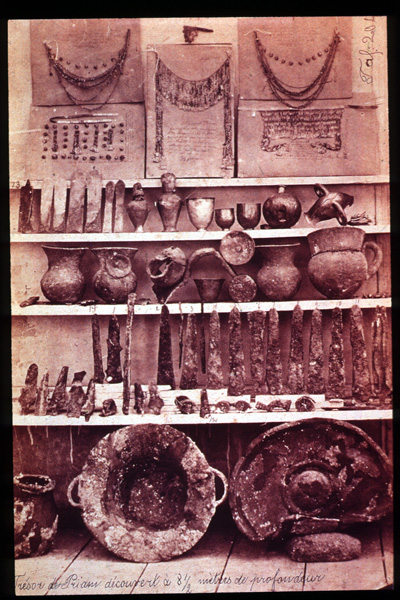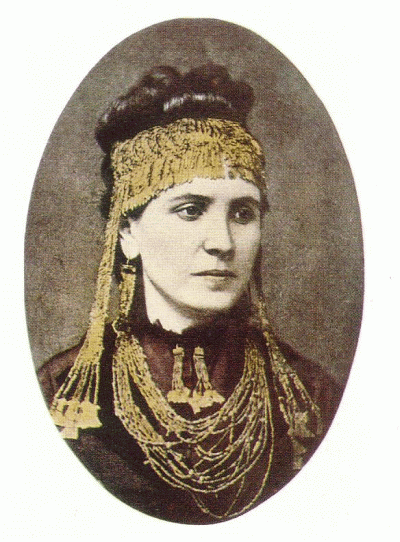
Classic Turkey trip, 2012
TROY
HOME :
turkey trip Istanbul I Istanbul II Istanbul III Istanbul IV Bursa Troy Pergamum Sardes - Pamukkale Aphrodisia Ephesus Priene Didyma MiletCapitels
After a pleasant night in Bursa we got on the bus bright and early (still bushy tailed) on route to Troy. Before we visited the ruins at Troy we had lunch at Çanakkale and discussed the history of the Hellespont the narrow stretch of water connection the Aegeian and Marmara seas. The Hellespont (named after the drowned daughter of Nephele) has been the site of many wars, most recently the disastrous British led Gallipoli campaign and the decisive battle in the war of independence against Greece in 1922. Gallipoli became a traumatic event for the ANZAC troops (Australian and New Zealanders) who became essentially canon fodder. The leader of the victorious turkish armies in both battles was Kemal Mustafa, later titled Kemal Atatürk (Father of turks) who essentially created modern Turkey. Today the Hellespont is a peaceful stretch of water, popular with swimmers who attempt to duplicate Lord Byron's famous swim across the Hellespont from Europe to Asia. Of course, we were there not to commemorate either Helle, Byron or even Atatürk but the - depending on your viewpoint - fantastic or criminal - activities of one Heinrich Schliemann a "man with a plan": |
||
"Priam's" treasure before cleaning |
Find the Troy of Homer's Ilias. Eventually he received permission to dig and did so with more enthusiasm than scientific acumen. As a result he cut clear through several thousand years of archeological evidence (the infamous "Schlimann Graben") down to a site two thousand years earlier than the Homeric Troy. There, however, he found one of the richest treasures ever, commonly known as Priams treasure, although that name is the result of Schliemann misidentifying the age of his great find. The treasure consisting of several thousand individual gold and other precious metal artifacts should have been turned over to the Ottoman government. Schliemann, however, smuggled it out of Turkey into Greece. After paying hefty compensation to Turkey, the treasure eventually ended up in the "Alte Museum" in Berlin. It stayed there until 1945, when it disappeared. As had been suspected, but consistently denied by the |
Sophia Schliemann wearing some of the treasure |
| USSR, it had been looted by the Russian army and hidden in a museum in Moscow. Russia finally admitted to having the treasure and eventually has made it available to public viewing. It is still in the Pushkin Museum in Moscow. Both Germany and Turkey have been trying unsuccessfully to negotiate with Russia. Thus, as is the case with most of the historical archeological sites, it is also | ||
| true in Troy that most of the interesting finds are someplace else in someone's museum, what is left are ruins. And in the case of Troy - a fake Trojan horse, see the pictures below. The site is an on/off active archeological research site and the different layers have been carefully identified and labeled. Priam's treasure came out of Troy I, while Homer's Troy has been identified as Troy IV. | ||||
 |
 |
 |
||
 |
Ruins of Homer's Troy |
 |
||
 |
 |
 |
||


